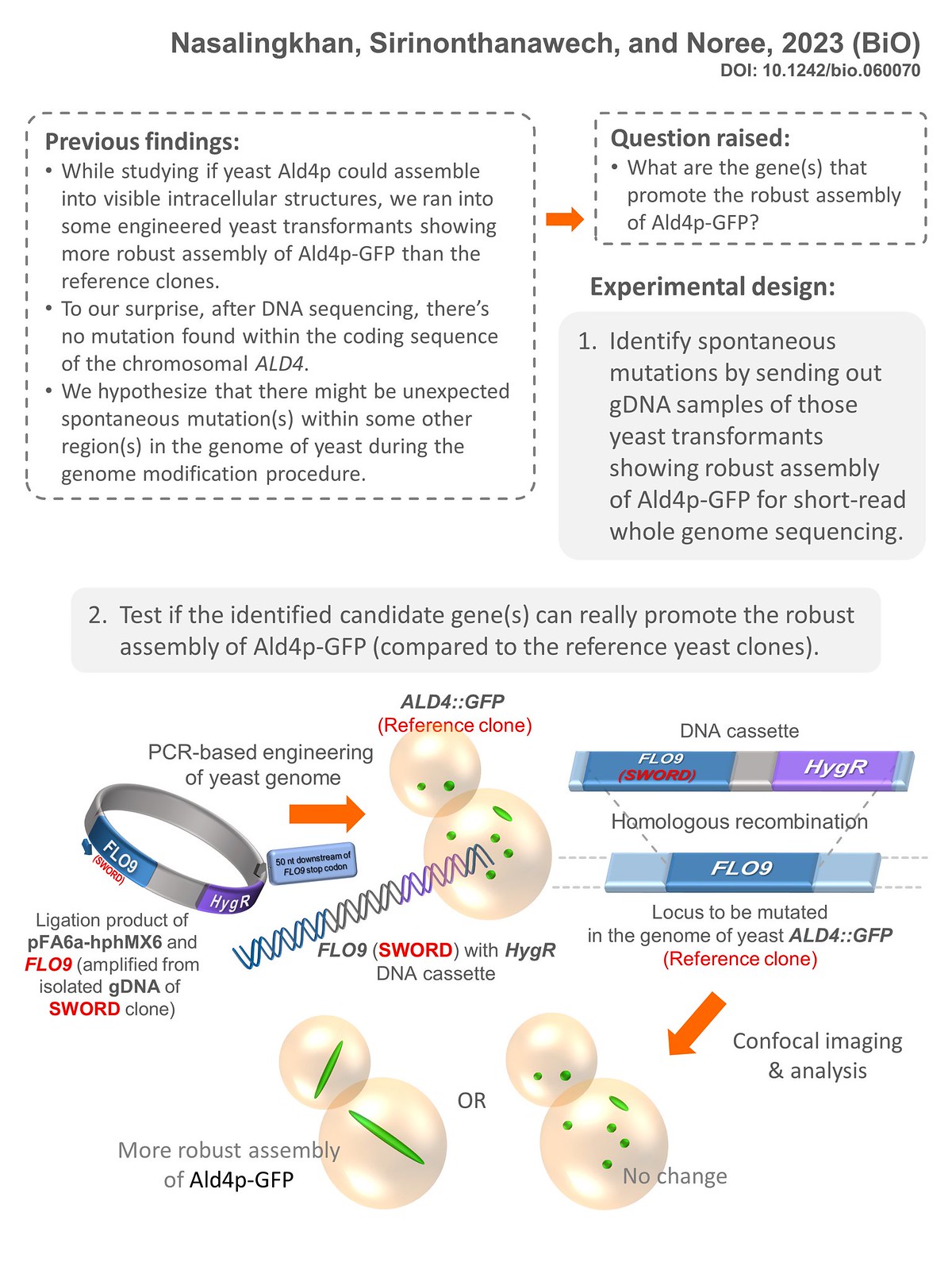ดร.ฉลองรัตน์ โนรี
รองศาสตราจารย์
Into the Unknown of Cell Biology: Fluorescent Protein Technology
in Combination with Yeast Genetic Engineering Being Used
to Reveal Unprecedented Roles of Metabolic Enzymes
- Tel: 66 (0) 2441-9003 – 7 Ext. 1274
- Email: chalongrat.nor
 mahidol.edu
mahidol.edu - Ph.D. (Biology), University of California, San Diego, 2013
- Academic Program(s)
Our research team focuses on a fascinating aspect of cell biology: how metabolic enzymes assemble into large, organized structures. We’ve found that many of these enzymes don’t just exist as individual proteins but can come together to form visible filaments and other complex shapes. Our work has shown that this enzyme polymerization is a key way a cell can regulate its metabolism.
To illustrate this, we’ve extensively studied the yeast enzyme asparagine synthetase. Our research has shown how it forms these structures in response to nutrient stress, directly impacting its activity. Apart from this primary metabolic role, we’ve also investigated a notable moonlighting function of asparagine synthetase in human cells, where it associates with the mitotic spindle, suggesting a potential role in cell division. Using yeast as a model system, we confirmed that the catalytic activity of asparagine synthetase is not required for this function. By introducing a mutation known to disrupt its activity into the yeast genome, we found that its ability to associate with the mitotic spindle remained intact.
Beyond cytosolic enzymes, we have recently expanded our work to include mitochondrial enzymes. We’ve discovered that a major mitochondrial enzyme, aldehyde dehydrogenase (Ald4p), can have a portion of its population form gigantic supramolecular structures in the cytoplasm, despite being a resident of the mitochondria. Our research has revealed the high-order structural dynamics of Ald4p, showing that adding its substrate, acetaldehyde, can induce its polymerization. By introducing specific mutations that disrupt its catalytic activity, we have been able to show that the formation of these structures is composed of active enzyme. This finding highlights a new paradigm where mitochondrial enzymes can exist and function outside their canonical location, with their polymerization being directly linked to their catalytic state.
Through these studies, we’ve demonstrated that this process of enzyme organization is a widespread phenomenon, not just limited to a few specific proteins or cellular compartments. Ultimately, our goal is to understand how the physical organization of enzymes influences the way cells function, which could have significant implications for medicine and using yeast to model human diseases.

 |
 |
 |
 |
 |
 |
 |
 |
 |
 |
 |
Publications and Citations:
Google Scholar
Personal Website:
norita251.wordpress.com
Academic Tree:
Academictree.org








Contact:
Institute of Molecular Biosciences, Mahidol University, 25/25 Phuttamonthon 4 Road, Salaya, Phuttamonthon, Nakhon Pathom 73170 Thailand
Email: chalongrat.nor mahidol.ac.th or chalongrat.nor
mahidol.ac.th or chalongrat.nor mahidol.edu)
mahidol.edu)
Tel: +66 (2) 441 9003 to 7 (ext. 1274)
![]()






